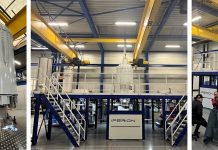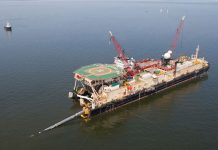Wire Arc Additive Manufacturing (WAAM) is a fast and highly efficient production process, based on well-known welding and cladding know-how, applicable to a wide range of alloys from unalloyed to high alloyed steels, nickel alloys, titanium alloys and aluminium alloys. Basically anything that can be welded can also be manufactured by WAAM.
In comparison with welding and cladding processes, analogies with WAAM are known and evident but WAAM is certainly more challenging for filler metals – reasons are basically linked to higher demanding metallurgical and process requirements.
About metallurgical, productivity leads to the use of high heat input and low cooling rate due to the subsequent layers deposition technique, hence physical and mechanical properties of the deposit has to be soundness also in such conditions. Additionally it has to be tolerant to take multiple hardening/tempering cycles by multiple layers and afford heat treatment when and if necessary.
Wire chemistry is also influencing arc stability, molten material fluidity as well as the silicate islands formation over the bead, which might be detrimental for the deposition of the subsequent layer. Level of impurities and Silicon is also very important to keep this issue under control.
Regarding the process, as arc stability and uniform feeding are crucial, the perfect spooling together with the proper wire surface condition make the big difference in order to minimize the number of stops and thereby increasing the lifetime of liners and contact tips.
Therefore voestalpine Böhler Welding decided to develop a specific range of solid wires called 3DPrint AM, covering the wide majority of alloys required in this field. Specific surface finishing of the drawn wires have been settled and for some of the alloys, chemistry has been fine-tuned, compared with the welding wires in order to achieve the wished mechanical properties and bead appearance properties in such demanding conditions.
Endurance testing protocols with the related acceptance criteria have been settled in order to prove a high level of arc stability and feed ability, measuring in real-time all the electrical parameters involved, including the current at the wire-feeder which is proportional to the resistance torque.






